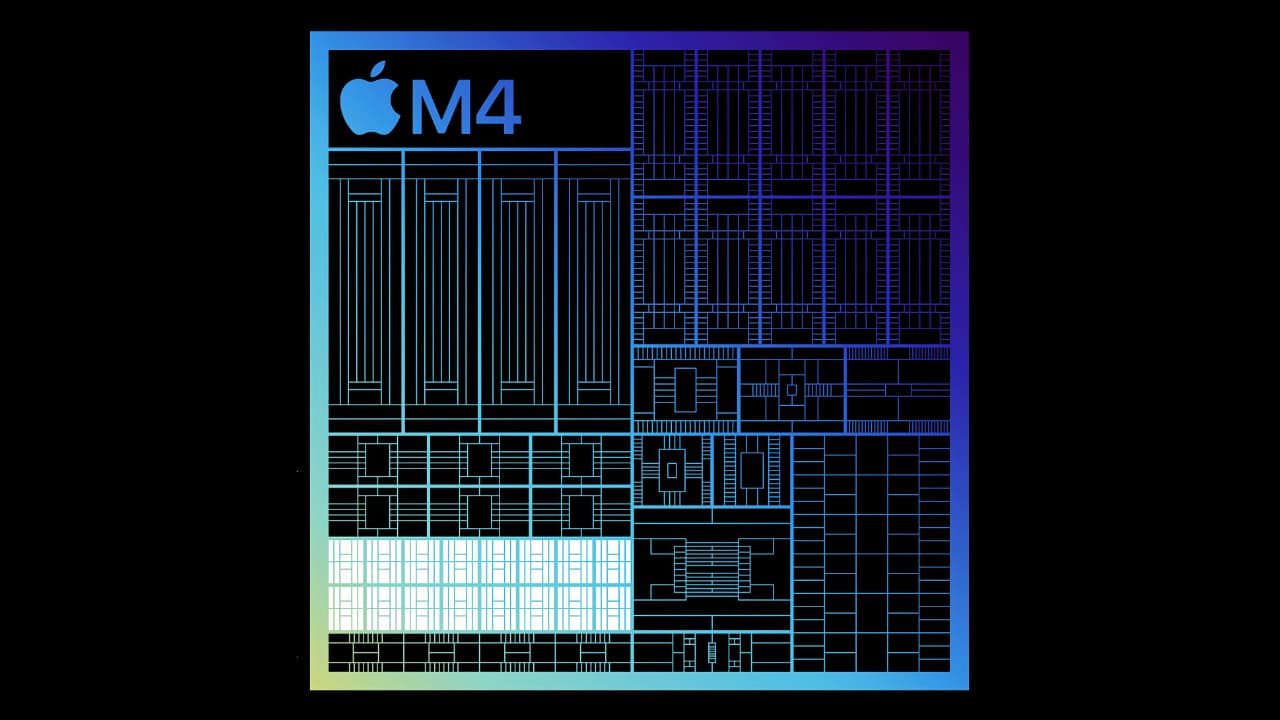
Following the early release of M4 in the latest iPad Pro, what comes next? Heath McKnight looks at the new possible destinations in the Apple silicon roadmap.
Well, it looks like we were all wrong. Everyone was sure Apple would follow the same release schedule for the 3nm M4 silicon SoC (System on a Chip): Announce it in June 2024 at WWDC, release it in a MacBook Pro and MacBook Air at the end of the year.
Well, Apple obviously threw the form book out the window and released the M4 in the new iPad Pro! But what does that mean for the Apple silicon roadmap, along with the M3 Ultra?
The M4 is an all new design
The M3 chip debuted and shipped last October and many speculated the same would happen with the M4 this October. Well, Apple released it just 6 months after the M3 and in the brand new iPad Pro.
But the questions in many minds are, why did Apple release the M4 so early? And why in the iPad Pro? MacWorld pointed out that while the M3 is the first 3nm chip, the technology had to be retooled by chipmaker TSMC, N3E technology. As for the iPad Pro release, MacWorld said Apple doesn’t sell quite as many units as, say, the MacBook Air, so with early and limited supplies of the M4, this is a good candidate for a May 2024 release.
Geekbench’s testing shows a 25% speed improvement vs the M3, making it a no-brainer to release the next-generation 3nm design. And it’s perfect for AI, as Apple dives feet first into the tech with acquisitions and partnerships.
The M4 also features an all new design from Apple and TMSC, and features a smaller and more efficient and redesigned 3nm, making it better than the M3 with a different 3nm design. It’s also much faster, which is important as Apple enters the red hot AI race.
The M4 and eventual M4 Pro, M4 Max, and M4 Ultra will offer a powerful solution to handling AI not only for consumers, but professionals needing that kind of horsepower. Apple is essentially now competing with Nvidia and others to get their hardware in the hands of AI developers and end users.
It’s also a good bet that Apple will debut even more new AI and ML (machine learning) features in future updates of Final Cut Pro and Logic Pro, and the M4 will be able to handle it well.

M4 delivers up to 1.5x faster CPU performance over the M2 in the previous iPad Pro, boosting performance across pro workflows in apps like Logic Pro
What about the M3 Ultra?
After Apple debuted the M3, M3 Pro, and M3 Max chips in October 2023, it was a very well-educated guess that the M3 Ultra would debut in the summer at WWDC (with perhaps a preview of the M4), but now that’s up in the air. Some still think Apple could release, at the very least, a Mac Studio with an M3 Ultra by June 2024, and maybe also a Mac Pro.
But what if that’s off the table and Apple previews the M4 Pro, Max, and Ultra chips? Mark Gurman (via Tech Radar) has said we won’t see a Mac Studio or Mac Pro refresh this year, which could signal the M4 Max and M4 Ultra debuting in 2025, skipping a generation.
It would also make sense for Apple to not release an identical Mac Studio and Mac Pro setup at massively differing prices, as they did with the M2 Ultra. One possibility, and this is just speculation on my part, is that Apple could release the Mac Studio with an M3 Max and M3 Ultra later this year (despite what Gurman said) and then unveil an M4 Ultra-powered Mac Pro in 2025, thus not cannibalizing it.
M4 Mac releases
Apple may hold off on new laptops with the M4 until the fall, to try and preserve M3 sales. Rumors are heating up that the 14-inch MacBook will debut with an M4 towards the end of the year along with the above mentioned MacBook Pro 14- and 16-inch models with the M4, M4 Pro and M4 Max. There are also rumors regarding a new Mac mini with the M4 and M4 Pro, offering a fast Mac in a small form factor and affordable pricing. Hat tip: Mark Gurman.
Then there’s the rumor that the iMac won’t have to wait a couple of generations for an update, which is what happened previously (M1 to M3). MacRumors has stated that the iMac will keep the same appearance and 24-inch size, but have the M4 chip. Nothing new on the rumored 30-inch model. The Mac Studio kind of fills that void.
Apple silicon: M5 and beyond

Pro rendering performance in apps like Octane is already up to four times faster than on iPad Pro with M2. There might be more to come too
Apple may have thrown out the road map it originally developed, with new silicon chips released the fourth quarter of every year. Or maybe it was planned all along that’s as development of Apple silicon improved, they could release chips faster. The M5 could very well debut in early 2025 powering the iPad Pro and featuring the rumored 2nm design.
Per PC Mag, 2026 could see the release of the rumored foldable, 20-inch all-screen MacBook but with an M5 (folded to the size of a 13-inch MacBook Air, but could also feature other sizes). If true, I believe it could even feature an M6.
Apple does what Apple does, still surprising us and pushing the envelope. As it improves its AI offerings and offers the major developers behind the most innovative AI technology powerful Macs, Apple can continue to stay ahead of their competition.
As for me, my MacBook Pro M1 13-inch model is still going strong, but an M4 Pro or Max looks like a good option going into next year. But I do have a fast Mac Studio M1 Max that really fills the need for speed. Not time for an upgrade just yet…
Tags: Technology Apple


Comments